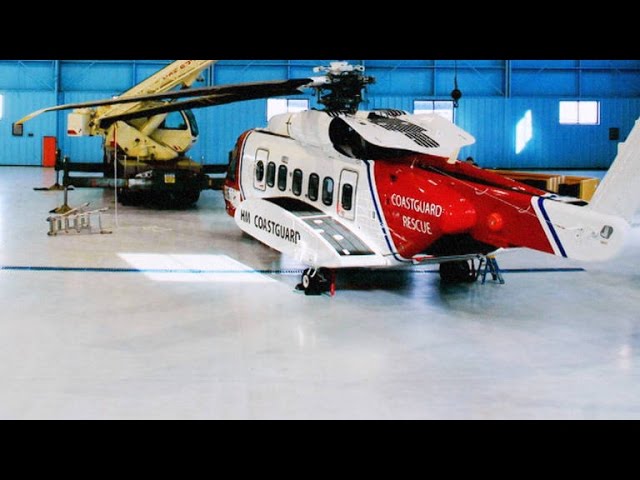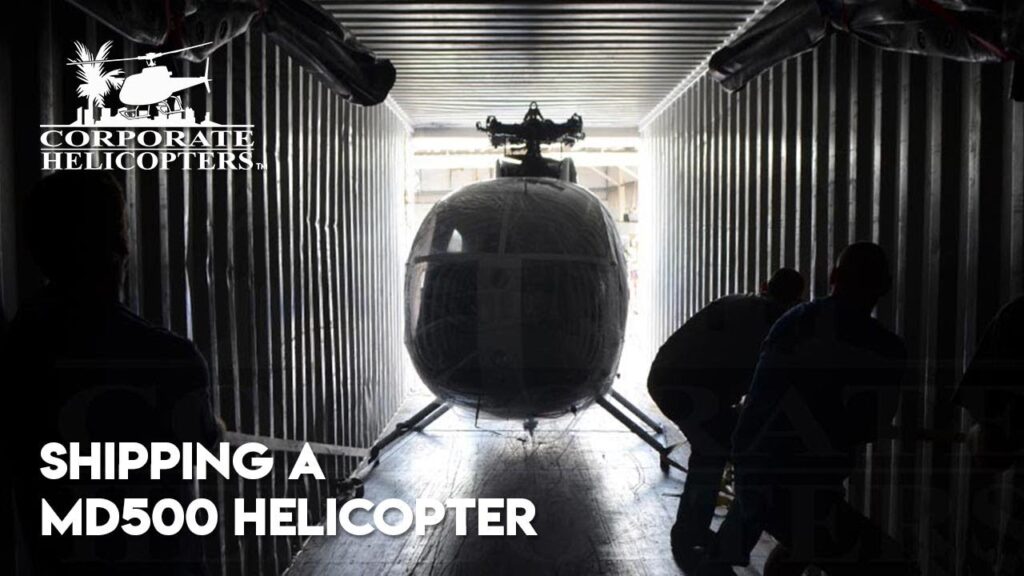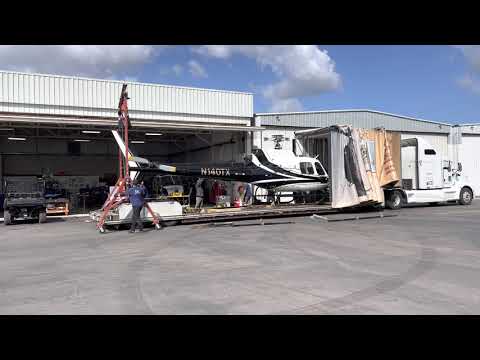The Ultimate Guide to Helicopter Shipping Across the USA
Exploring the vast landscapes of the United States from the sky is an unparalleled experience, and owning a helicopter gives you the freedom to enjoy this at your leisure. However, helicopter owners often face the challenge of transporting their aircraft from one location to another, particularly over long distances where flying may not be feasible. This guide delves into the intricacies of helicopter shipping across the USA, ensuring your prized aircraft reaches its destination safely and efficiently.
When considering helicopter transportation, it is crucial to understand the various methods available. The most common method employs specialized trailers that can securely hold the helicopter, safeguarding it from road vibrations and weather elements during transit. Another option is utilizing a larger cargo aircraft, which can transport the helicopter over substantial distances rapidly and reduce travel time significantly. Each method has its benefits and constraints, and the choice often depends on factors such as cost, distance, and time constraints.
Preparing your helicopter for transport is a critical step that should not be overlooked. It often involves a thorough inspection, draining fluids, disconnecting batteries, and securing loose items. In some cases, rotor blades may need to be removed to fit within the transport dimensions. It is imperative to follow the manufacturer’s guidelines during this process to prevent any damage. Employing the expertise of a professional helicopter shipping company can streamline this process, ensuring your helicopter is properly prepped for its journey.
Securing the right permits and clearances is another area that requires careful attention. Helicopter shipping can be subject to various regulations, and it is vital to comply with federal, state, and local laws to ensure uninterrupted transit. This may include obtaining oversize load permits, planning the route in advance to avoid low-clearance obstacles, and ensuring the transport vehicle is equipped with the appropriate signage. Partnering with a shipping company well-versed in such regulations can greatly alleviate the administrative burden this step may present.
Finally, insurance coverage is a critical component of helicopter shipping. It is essential to verify your policy’s terms and ensure that it encompasses transportation risks. Additionally, it is prudent to check if the transport company offers supplementary insurance to cover any eventualities that may not be included in your existing policy. With the proper insurance in place, helicopter owners can have peace of mind knowing that their investment is protected throughout the relocation process.
Exploring the Logistics of Helicopter Transportation Services
Helicopter transportation services in the USA offer a unique and efficient way for travelers to navigate the vast landscapes, from bustling metros to secluded natural havens. When considering helicopter tours or chartered rides, understanding the logistics behind these services becomes paramount. Coordination between tour operators, aviation authorities, and the needs of passengers ensures a smooth and safe experience for all involved.
The first step in the logistics of helicopter transportation involves identifying suitable take-off and landing zones. In urban areas, helipads are often located atop skyscrapers or dedicated areas near airports. For tours in more remote locations, like the Grand Canyon or Hawaiian islands, landing sites may be specially designated zones that comply with environmental and safety regulations. This careful selection process ensures minimal impact on the environment while providing passengers with awe-inspiring views.
Booking and scheduling also play a crucial role in the logistics of helicopter tours. Operators must balance demand with availability while adhering to strict flight schedules to prevent air traffic congestion. This often requires a highly detailed booking system that manages passenger lists, flight times, and helicopter maintenance schedules. Potential customers are usually advised to book their trips well in advance, especially during peak seasons, as last-minute availability can be limited.
Lastly, efficient logistics account for passenger safety and comfort. Safety briefings are a staple before any flight, educating passengers on the proper use of safety equipment and emergency procedures. Comfort considerations include noise-cancelling headphones, probably to mitigate the loud rotor sounds, and ensuring an optimal flight path that minimizes turbulence. Helicopter transportation services meticulously plan each aspect to provide a breathtaking yet secure experience for sightseers and travelers alike.
Top Considerations When Choosing a Helicopter Shipping Company
When it comes to selecting a helicopter shipping company for your tour operations in the USA, safety should be at the forefront of your considerations. Ensure that the company has an impeccable safety record, with well-maintained helicopters and a crew that’s trained for all aspects of flight and emergency situations. Review their certifications and make sure they meet or exceed all industry standards. Check with the Federal Aviation Administration (FAA) to confirm their compliance with regulations and see if they have any recorded incidents or violations.
Another vital factor to consider is the company’s level of experience and reputation in the helicopter shipping industry. Experience indicates that they have established processes and the expertise necessary to handle unpredictable variables during shipping, such as adverse weather conditions or logistical challenges. Don’t hesitate to ask for testimonials or references from past clients to get a sense of the company’s reliability and service quality. Perform online research to assess their reputation within the aviation community and among their clientele.
Accessibility and customer service are also critical when choosing a helicopter shipping company. Their willingness to accommodate your specific needs for tour operations and their flexibility in terms of scheduling, pickup, and delivery locations will greatly impact your business flow. Engage with their customer service team to gauge responsiveness and the level of support they are willing to provide throughout the shipping process. Ideally, find a company that offers transparent communication and shows a genuine commitment to customer satisfaction.
How Helicopter Shipping Works: A Step-by-Step Process
Shipping a helicopter is a complex process that requires meticulous planning and execution. The first step in helicopter shipping is the disassembly process. Trained professionals carefully dismantle various parts of the helicopter, such as the rotor blades, tail boom, and landing skids. This is necessary to reduce the size of the aircraft for transportation and to ensure that each component remains secure and undamaged during the transfer. Each part is labeled and cataloged to aid in the reassembly process at the destination.
After disassembly, the next step is packaging and crating. Helicopter components are wrapped in protective materials to guard against scratches, dents, and other forms of damage that can occur during shipping. Special crates, designed to support the weight and shape of the helicopter parts, are then used to house the wrapped components. These crates not only protect the helicopter’s components but also make handling and moving them much easier and safer.
The third step involves the actual transportation of the packaged helicopter parts. Depending on the size and destination, various modes of transport can be employed, including ground, sea, or air freight. Ground transport by truck is commonly used for shorter distances, whereas sea or air freight is selected for international or long-distance shipping. Each mode of transport is carefully considered to ensure that it is the most efficient and cost-effective method for the client.
Prior to delivery, all transport vehicles and containers undergo a thorough inspection to guarantee that they are in proper condition to carry the valuable cargo. During transportation, the shipment is continually monitored to ensure safety and to keep the client informed of the helicopter’s whereabouts. Upon arrival, the helicopter parts are carefully unloaded, inspected for any potential damage, and prepared for the final stage of the process – reassembly by certified technicians at the destination.
Ensuring Safety and Compliance in Helicopter Transport
When embarking on a helicopter tour, the safety and compliance of the transport operation are paramount. Tour operators in the United States must adhere to stringent regulations set by the Federal Aviation Administration (FAA). These rigorous standards ensure that every aspect of the flight, from pilot training to aircraft maintenance, is conducted in a manner that prioritizes passenger security.
Pilot Qualifications: Pilots must possess a commercial rotorcraft license and often have additional certifications in areas like instrument flight rules (IFR) operations. Their experience is continuously built upon with mandatory periodic training and re-evaluation to ensure they are prepared for all potential scenarios that can occur during flight.
Aircraft Maintenance: Helicopters used for tours are subject to frequent and thorough inspections. Maintenance schedules are strictly followed, with pre-flight checks being a routine part of the safety protocol. This diligence ensures that any mechanical issues are identified and addressed before flight, reducing the risk of in-flight emergencies.
In addition to pilot and aircraft readiness, helicopter tour operations must comply with specific flight regulations. These include adherence to predetermined flight paths, altitude restrictions, and no-fly zones. Communication with air traffic control is maintained to navigate active airspaces safely and to stay informed about any weather or operational advisories that could impact the flight plan.
Finally, comprehensive safety briefings are conducted with all passengers before take-off. These briefings cover the use of safety equipment, emergency procedures, and protocols for ingress and egress from the helicopter. By ensuring that passengers are well informed about safety procedures, helicopter tours enhance overall safety and compliance with aviation regulations.
Cost Factors and Efficient Planning for Helicopter Shipping
When considering transportation of helicopters, understanding the cost factors involved in helicopter shipping is crucial for effective budgeting and planning. One primary cost determinant is the distance to be covered during the shipment. Shipping helicopters across long distances, especially inter-state or international, can significantly increase the expenses due to fuel costs, pilot fees, and potential route deviations that might be necessary to accommodate aviation regulations and weather conditions.
Another factor influencing cost is the type and size of the helicopter. Heavy-lift helicopters, for instance, require specialized transportation due to their weight and size, which could include additional permits and logistics planning. These factors often result in higher costs compared to standard or light helicopters. It’s essential for clients to provide detailed specifications of their helicopters to receive accurate cost estimates and ensure appropriate transport arrangements are made.
Efficient planning plays a pivotal role in managing costs of helicopter shipping. Scheduling during the off-peak seasons can lead to reduced prices, as demand for shipping services decreases. Flexibility in shipment dates also allows transporters to optimize their route and fleet usage, potentially passing on savings to the client. Regular communication between helicopter owners and the shipping company can minimize the likelihood of unexpected delays or additional expenses, which are often incurred due to last-minute changes or miscommunication.
In the realm of international helicopter shipping, customs and import duties can form a substantial part of the overall cost. Engaging with a knowledgeable shipping company that has experience in international logistics can provide valuable assistance in navigating these customs processes. They can offer advice on how to take advantage of trade agreements, help in the preparation of necessary documentation, and ensure compliance with all legal requirements, thereby preventing costly hold-ups at borders.





